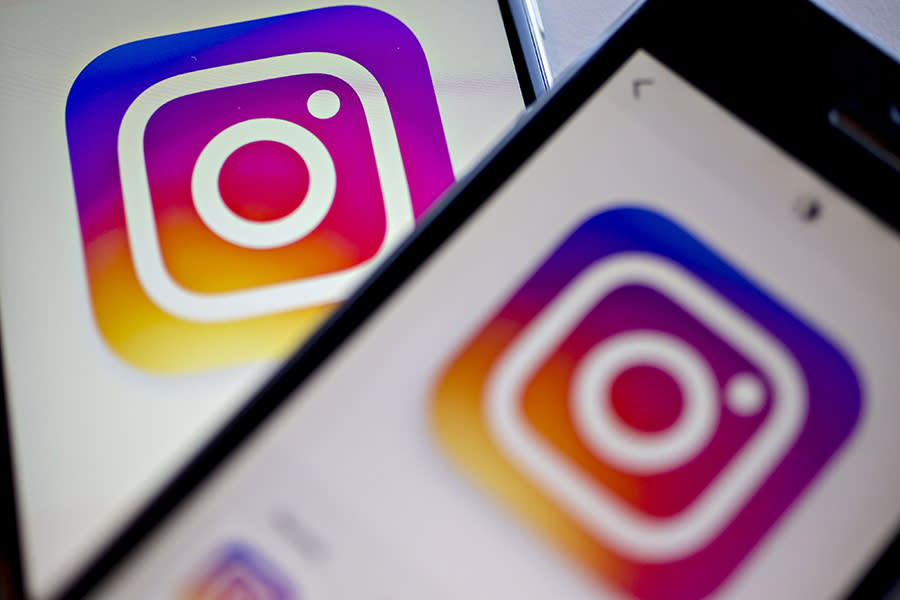Is Instagram Shopping on the Rise?

Actress Emma Watson recently revealed she has a particularly interesting way to shop. The 26-year-old uses one of the most popular social networking platforms — Instagram — to find products and new, sustainable brands.
“I use Instagram [to shop] a lot more than I used to, because I find lots of brands through it. I would often find I was going into stores and feel like, ‘Oh, I’ve only got an hour, I need to buy something, this isn’t what I came in for but it’s here, so I’ll purchase it.’ I never do that now,” she told Marie Claire.
Members of the celeb set aren’t the only consumers gravitating toward Instagram for their shopping ventures, and brands are taking notice — making major efforts in expanding and building their social platforms to accommodate the shift.
Some of the most trending brands for millennials, including Michael Kors, Victoria’s Secret, Nike, and H&M, among others, regularly update their social platforms with new content to connect with customers. These brands, along with other top sellers, recognize the opportunity in the market and are seeking to capitalize on it.
“Social media has become a social selling opportunity for brands. If they’re leveraged correctly, brands can lead customers either mobile, online, or physically into their stores as a direct response to that social media experience,” Retail Minded magazine founder Nicole Leinbach Reyhle tells Yahoo Style.
The retail expert also notes the influence of hashtags on the platform in showcasing products for different brands.
“People are using hashtags as a way to discover, and that’s leading to consumer purchasing as well,” she says. Hashtags allow brands to find like-minded users who will likely be interested in the content they’re posting. Building a large presence on the platform and interacting with users helps brands to grow their number of followers, which in turn helps to expose their products to more shoppers. Hashtags also allow consumers to locate specific pieces that influencers or celebrities have posted, or search for smaller brands they might be looking for — if the brands are tagging their content properly.
This new way of shopping is more convenient and accessible than visiting physical stores, a factor that appeals to many consumers.
“Shoppers, for the first time ever, are shopping on their terms, whether at home, on the go, or even in-store,” Ray Hartjen, RetailNext’s director of content marketing and public relations, tells Yahoo Style. “They’re calling the shots, and its requiring retailers to respond with easy, convenient, seamless — and branded — shopping experiences across all shopper ‘touch points,’ both digital and physical.”
One of Instagram’s latest features — Instagram Stories — is also an appealing concept to brands. The tool lets users create stories and link to products, allowing brands to post shoppable content directly on their profiles. In the past, brands depended on shopping tools, such as LiketoKnow.it, to make their posts easier to shop.
“Important in these new go-to-market strategies from retailers are social networking and sharing sites like Instagram, Pinterest, and Snapchat,” Hartjen says. “It’s where shoppers, particularly millennials and digital natives like Gen Z, spend their time, and, again, it’s worth noting: It’s the shoppers dictating the desired shopping experience. There are just too many global shopping alternatives to tolerate a brand that doesn’t ‘get it.’”
The pressure for brands to keep up and grow with their consumers leaves many continually reinventing their retail strategies — which includes modifying social platforms. Retailers like Calvin Klein and H&M have collaborated with top celebrities in the past five years to connect with more millennials, which has helped to boost their followings on their social channels. High-end label Dolce & Gabbana enlisted top social media influencers to walk in its fall 2017 men’s show in January.
A post shared by Dolce & Gabbana (@dolcegabbana) on Jan 14, 2017 at 6:03am PST
By tapping millennial star power, fans are redirected back to the brand’s social platforms, where they can check out the latest collections.
As the influence of social media evolves, how brands accommodate shoppers on their social channels will likely change with it. Considering Instagram has 600 million monthly active users, it would be remiss of fashion brands not to market their products on the platform.
“Social selling isn’t going to just be something that’s discussed. It’s actually going to be something that’s leveraged with data and actual clickthrough capability. It’s already done — people are able to buy directly from social media and purchase something directly from a brand,” Leinbach Reyhle says. “That will only increase in the not so distant future, so brands will have to react to that. Right now some brands are making it easy. By easy, I mean less clicks, easier navigation to go from social media to actually making a purchase. Over time, it will be something that all brands will do.”
While digital expansion is critical for brands, Hartjen feels brands shouldn’t discount the importance of the in-store experience as well.
“Stores just need to be reinvented. And you’re seeing a lot of digitally native brands break into physical retail the past few years, including digital titan Amazon,” Hartjen says. “It’s all important to shoppers, so it’s all important to retailers. The key is to have a seamless branded experience across all channels.”
Read more from Yahoo Style:
Your Instagram Habits Are ‘Stupid,’ According to One Famous Fashion Photog
A Model Risked Her Life and Broke the Law, All for a Photo Shoot
Follow us on Instagram, Facebook, and Pinterest for nonstop inspiration delivered fresh to your feed, every day.

